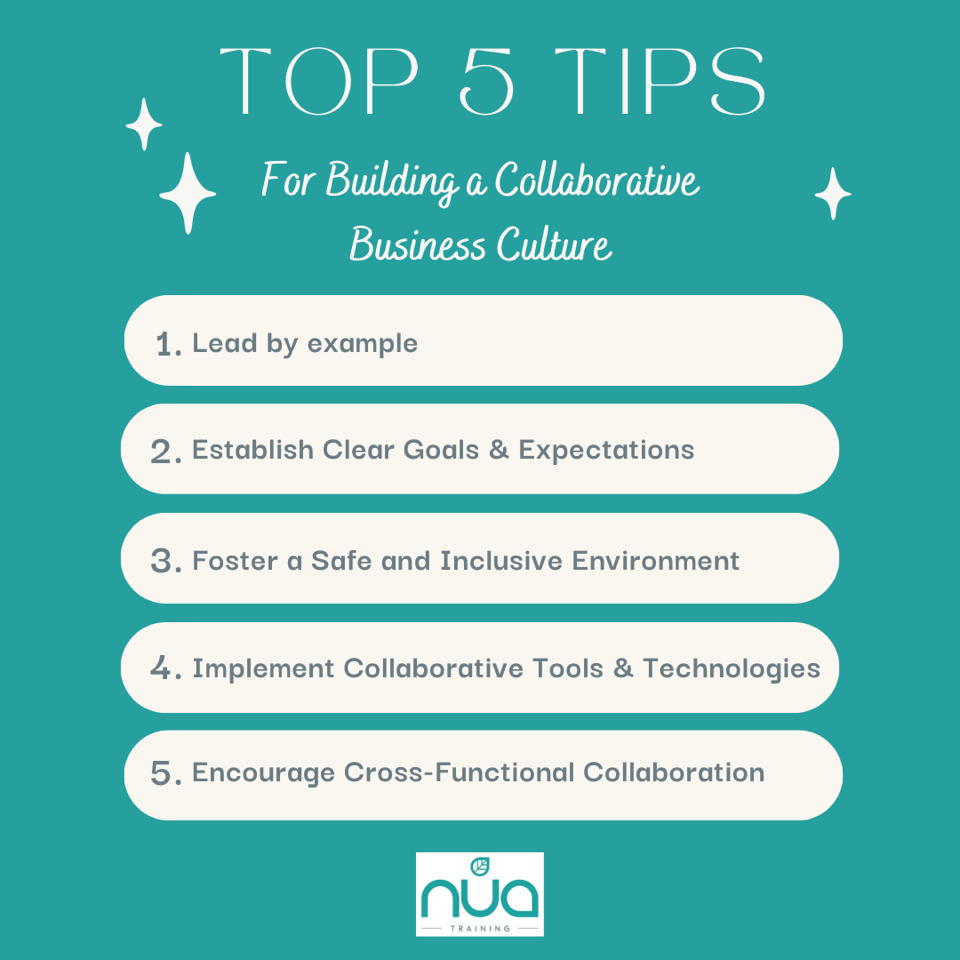
The final blog in our five part series that looks at the core skills you need to succeed and excel as a data leader focuses on the power of collaboration.
Driving change within an organisation can be a long and complex process, which is why collaboration is such an important skill to develop and hone, especially for data teams. Afterall, you are unlikely to deliver the benefits of the end data vision without the buy-in and support of others.
In fact, according to the latest Data and AI Leadership survey by New Vantage Partners, a staggering 80% of executives cite cultural obstacles as the greatest barrier to becoming a data-driven organisation, with just 20% pointing to technology limitations as the primary impediment.
Collaboration is therefore at the heart of all successful data teams and is the driving force behind their achievements and excellence. In today’s dynamic and interconnected business world, where innovation and adaptability are paramount, the ability to collaborate effectively has become a crucial skill with many benefits.
Benefits of Collaboration
Fostering a Culture of Innovation – Collaboration cultivates an environment conducive to innovation. When individuals with diverse skills, perspectives, and experiences come together, they bring a rich tapestry of ideas, enabling the generation of innovative solutions.
We’re only just beginning to see the impact of AI on our day to day working. In an environment marked by rapid technological advancements and market disruptions, teams need to be flexible and responsive. By sharing knowledge and collaborating on projects, team members can leverage each other’s expertise to tackle complex challenges, uncover fresh insights, and develop breakthrough strategies.
Enhanced Problem-Solving and Decision-Making – No data programme is without its issues. High-performing teams excel at problem-solving and decision-making due to their collaborative approach and nature. When team members collaborate, they pool their collective intelligence and skills, leading to more comprehensive analyses of problems. Diverse perspectives enable a broader range of potential solutions to be considered, which ultimately improves the quality of decision-making. Collaboration helps teams to identify blind spots more easily, challenge assumptions, and arrive at well-informed choices that are more likely to succeed. Moreover, it allows for thorough evaluation and reduces the risk of overlooking critical factors.
Increased Productivity and Efficiency – Collaboration is a catalyst for increased productivity and efficiency within business teams that communicate effectively. New technologies help companies extend participation on a project to an ever-greater number of people, allowing firms to tap into a wide body of knowledge and expertise. According to Harvard Business Review’s research into Building Collaborative Teams, many complex tasks involve teams of 100 or more, however, as the size of a team increases beyond 20 members, the tendency to collaborate naturally decreases which is why communication becomes paramount.
Under the right conditions, large teams can achieve high levels of cooperation, but creating those conditions requires thoughtful, and sometimes significant, investments in the capacity for collaboration across the organisation.
By working together towards a common goal, team members can divide tasks, leverage individual strengths and achieve outcomes more efficiently. Collaboration fosters synergy, where the combined efforts of team members exceed what could be accomplished at an individual level.
Additionally, through effective collaboration and communication, knowledge sharing becomes seamless, avoiding duplication of efforts and promoting a continuous learning environment.
Strengthened Relationships and Team Cohesion – Effective collaboration strengthens relationships and enhances team cohesion. When team members collaborate, they build trust and mutual respect through shared experiences and achievements.
Collaboration promotes open communication, active listening, and empathy, which fosters a positive team culture. Individuals feel valued and supported, leading to higher levels of engagement and commitment to the team’s objectives. This, in turn, leads to increased job satisfaction, higher retention rates, and attracts top talent who seek an environment that values collaboration and teamwork.
Here are our top 5 tips on how to build a collaborative business culture between your data team and the wider business:

- Lead by Example
Building a collaborative culture starts at the top. Leaders across the whole business should model collaborative behaviours and actively demonstrate their commitment to collaboration. They can do this by encouraging open communication, active listening, and inclusive decision-making. When employees see their leader’s embracing collaboration, they are more likely to follow suit.
- Establish Clear Goals and Expectations
Clearly define the purpose, goals, and expectations of collaboration within your organisation. Ensure that employees understand how collaboration aligns with the overall vision and mission of the business. When everyone shares a common understanding of the desired outcomes, it becomes much easier to work collaboratively towards achieving them. - Foster a Safe and Inclusive Environment
Create a safe and inclusive environment where all team members feel heard and comfortable expressing their ideas, opinions, and concerns. Encourage diversity of thought and respect for different perspectives. Emphasise the value of each individual’s contributions, regardless of their role or hierarchy within the organisation. Promote psychological safety, where people feel secure enough to take risks and share their thoughts without fear of judgement or retribution. - Implement Collaborative Tools and Technologies
In the hybrid world of work we are now operating in, technology is a key enabler in facilitating collaboration and knowledge sharing within your organisation. Visual collaboration platforms, project management software, and document sharing systems all enable seamless communication, real-time collaboration, and access to information, regardless of physical location. Having run remote brainstorming sessions using visual collaboration platforms, it’s surprising how effective the outcomes can be, if it’s not possible for everyone to be in the same room. - Encourage Cross-Functional Collaboration
To encourage cross-functional collaboration, you need to break down silos. Data Teams often sit in silos within an organisation, in isolation, focusing on the question they think they’re answering, but unfortunately, it’s not the answer the business needs.
Facilitating opportunities for employees from different departments and teams to work together on projects, initiatives, or problem-solving sessions opens their eyes to different perspectives, enhances the exchange of ideas, promotes a holistic understanding of the business, and improves the overall effectiveness of the decision-making processes.
Also, don’t miss the opportunity to acknowledge and reward collaborative behaviours and achievements. It’s important to celebrate successful collaborative projects and recognise individuals who actively contribute to a collaborative culture. This can be done through public recognition, performance evaluations, or even incorporating collaboration as a key competency in your organisation’s reward and recognition programme. By reinforcing the importance of collaboration, you motivate employees to continue engaging in collaborative efforts.
Embracing collaboration as a core principle empowers employees, enhances organisational agility, and ultimately drives business growth in today’s dynamic and interconnected world, powered by data.
Building a collaborative business culture is a continuous effort that requires commitment and active involvement from leaders and employees alike. By leading by example, establishing clear expectations, creating a safe environment, implementing collaborative tools, and encouraging cross-functional collaboration, businesses can foster a culture that values teamwork, innovation, and collective success.
If you found this article useful, and you’d like to help your best people and teams excel through data leadership coaching, please get in touch. We’d love to hear from you. To find out more email: tony@nuatraining.co.uk
About Tony Lamb
Tony Lamb is a Director of Nua Training and Lamb Direct Consulting Ltd. He has over 30 years’ experience of launching and running data businesses and building high performing teams. His last inhouse role was as Head of Data Strategy at Royal Mail.
Photo by Matteo Vistocco
